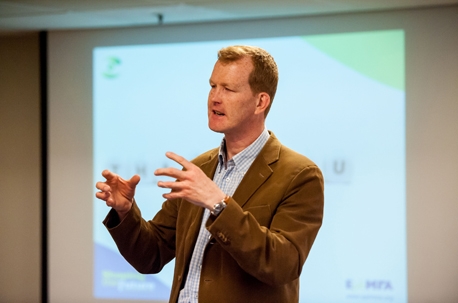OPINION27 March 2014
All MRS websites use cookies to help us improve our services. Any data collected is anonymised. If you continue using this site without accepting cookies you may experience some performance issues. Read about our cookies here.
OPINION27 March 2014
Lessons in customer understanding, straight from the Marks & Spencer service desk. By Craig Scott.

I started my working life as a management trainee with Marks & Spencer. During my stint, I was stationed in one of their largest stores in Glasgow and I was often called to the customer service desk to sign-off on returned items. It was a fun but informative place to be in order to learn about customers.
One woman insisted her oven gloves were melting every time she took her roast potatoes out. The gloves turned out to be a pair of non-heat-resistant men’s slippers. Another man returned his shoes as the soles had worn through, which he wasn’t very happy about. We eventually dated them to a range that M&S stopped selling 25 years ago.
It was while there that I decided to pursue a career in research at a different company. In my first clientside role I was commissioning both qual and quant research to understand our consumers. But something kept gnawing at me while looking over piles of quant data, or while sat behind the focus group glass.
I thought I was championing consumer knowledge, but – to be honest – I didn’t feel that I knew my customer as well as I should; certainly not as well as I did during my days on the M&S customer service desk.
What surprised me was how few people within the organisation actually spent time with their customers. I’m not just talking about the research team, but the marketing team, the senior management team and the board (some of whom didn’t even buy or use the products they manufactured).
Procter & Gamble was one of the first to buck this trend. Chief executive AG Lafley famously went to people’s homes and got on his knees under their kitchen sinks, pulling out bottles of detergent and bleach, to ask why they bought the things they bought. Lafley sent a very strong signal that he expected his employees to do the same, which shifted the entire culture of the company.
The research team I was a part of took inspiration from this and pioneered new – at the time – initiatives of consumer connections. We spent time with consumers in their homes, their cars and at the supermarket. It was a very knowledge-lucrative exercise and enabled us to really see for ourselves what consumers were doing with our brands and how they considered us against our rivals.
The knowledge wasn’t conceptual – given to us in a viewing facility with a glass of wine in our hands. We could hear it and see things traditional research couldn’t pick up. Critically we didn’t reduce our research spend, but complemented our conceptual knowledge with our new actual knowledge. It was intuitive, gut-feel and judgement-based, which is hard to explain or demonstrate in ROI terms.
But as John Keats once said: “Nothing ever becomes real till it is experienced.” That’s a little piece of wisdom that business leaders need to keep in mind.
Tips on deploying an effective customer connection programme
• Write a brief discussion guide
Make sure it’s wide-ranging, but get your team to agree on a single question they want answered, so they can pool that knowledge to inform a specific project.
• Dress normally
Don’t land your executive car on the driveway and walk in with your power suit on – it intimidates.
• Talk, don’t interrogate
A little bit of small talk goes a long way, so don’t launch into your questions from the off. And when you do start asking your questions, consider the style – are they open-ended, generative and un-opinionated? Also, be sure to maintain the flow of conversation with questions that are thoughtfully constructed.
• Watch, as well as listen
Don’t underestimate the power of observation. If you want to see how people really use your products, ask them to bake a cake, clean the toilet, or shop online while you watch.
• Relax
It’s not a performance, so be yourself. And it’s not an interview, it’s a chat – with the emphasis on you listening. Write down the things you learned after you’ve left and had time to reflect.
• And remember
It’ll take several visits and many more conversations to build up a full picture of your consumer – so don’t draw conclusions from just one customer.
Craig Scott is marketing capability director at Brand Learning
2 Comments
Peter Mouncey
10 years ago
Thanks for your interesting post. I certainly share your sentiment on this. The line from John Keats is very apt. However, it has always puzzled me that managers seem to forget they are consumers too, when they develop & implement strategy that they would not accept themselves when in customer service situations.
Like Reply Report
Anon
10 years ago
It's okay doing this if something emerges from it but M&S don't seem to learn anything. Their online deliveries are hardly ever on time and their customer offering is very poor. I wonder how often their CEO buys online and then has to wait in for a non-existent delivery?
Like Reply Report